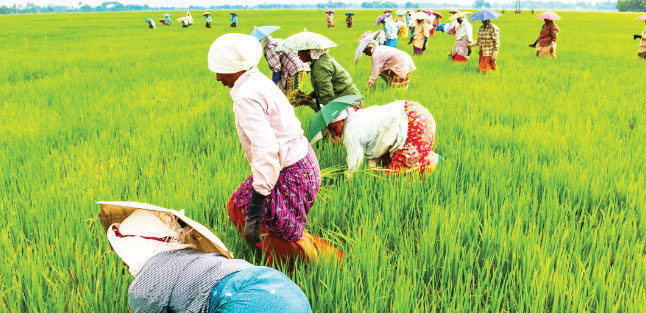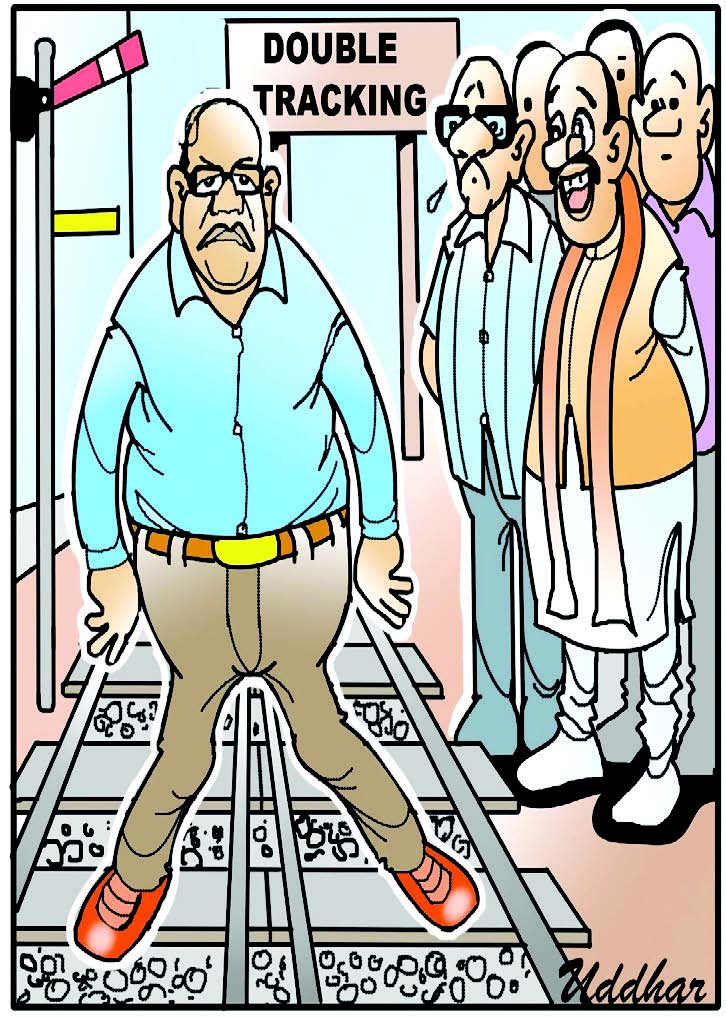
The Goa Agricultural Tenancy Act 1964, enacted to regulate agricultural land tenancy in the Union Territory of Goa, Daman, and Diu, has recently entered its diamond jubilee year. Despite several amendments, including the ‘land to the tiller’ amendment of 1976 aimed at securing tenants' tenure and protecting their interests, the law has failed to achieve its intended objective. Paddy cultivation has significantly declined, resulting in reduced rice yields. To revive Goa's agricultural sector, the diligent enforcement of Section 36 of the Goa Agricultural Tenancy Act is imperative. The provision empowers the Government to assume management of agricultural land if it is left uncultivated for a period of more than one year.
The Tenancy Act's shortcomings can be attributed to several factors. Firstly, it lacks sufficient incentives for tenants to invest in land improvements, hampering agricultural productivity and overall sectoral growth. Moreover, it inadequately addresses the issue of land fragmentation, which has adverse effects on farming efficiency and investment. As tenants acquire ownership rights, landholdings become subdivided, leading to increased costs, reduced economies of scale, and decreased productivity. The inability to harness economies of scale and manage smaller landholdings hinders the adoption of modern agricultural practices.
The decline in paddy cultivation is a pressing concern for Goa, with statistics revealing a drastic decrease from 60% of land under agriculture in 1960 to a mere 10% in 2020. This decline can be attributed to an aging farming population, waning interest among the younger generation in agriculture, and the adverse effects of land fragmentation. Fragmented land not only hampers efficient cultivation, but also impedes the adoption of modern techniques for increased productivity.
Land fragmentation's consequences extend beyond individual farms, resulting in inflated operational costs, reduced economies of scale, and limited access to modern agricultural practices. Moreover, fragmented land leads to the loss of fertile agricultural areas, soil degradation, and long-term sustainability challenges.
Goa's history, including at the time of the Great Famine, the two World Wars and the economic blockade, and the role of Comunidades in preserving food security, emphasizes the need for long-term solutions. Comunidades played a vital role in ensuring food security during these challenging times. However, the Agricultural Tenancy Act introduced the concept of ‘Tenants Associations’ without sufficient coordination, funding, technical expertise, or focus on Khazan embankments' maintenance. This failure negatively impacted land preservation and overall agricultural productivity.
Dr V M Prabhu, in his article ‘The Goa Agricultural Tenancy Act: A Critical Review,’ highlights the increase in fragmented landholdings resulting from the tenancy law, making mechanization difficult. Smaller land plots lead to fragmentation, lower productivity and profitability. New landowners often sell land, convert for non-agricultural purposes, or leave the land fallow, reducing overall cultivation area and biodiversity.
Prof Pranab Mukhopadhyay, in his paper ‘Now that Your Land is My Land... Does it matter?’ explains that although the tenancy law created a new set of landowners, it did not lead to better resource management.
Despite the creation of Panchayats and Tenants Associations, land homogeneity did not result in cooperative solutions. In the absence of social capital among agents with no prior history of cooperation, a ‘Pareto inferior’ situation emerged. Official data of Directorate of Agriculture indicates a significant reduction in acreage under paddy cultivation to 31,000 ha in 2018 from 50,302 ha in 1961. Fallow lands have become prime targets for unauthorised conversion.
To revitalize Goa's agricultural sector and address these issues, immediate action is necessary, focusing on enforcing Section 36 of the Goa Agricultural Tenancy Act. To achieve this, the Government ought to entrust the management to Comunidades under Sub-Section (5), leveraging their understanding of regional ecologies and traditional farming methods. Comunidades possess social capital to encourage collaboration, mobilize labour and resources for community-led projects, and promote sustainable agriculture and the preservation of local agro-biodiversity.
Implementing these measures may face challenges such as resistance from former tenants-turned-landlords. However, proactive collaboration among all stakeholders, including the Government, landlords, and Comunidades, can overcome these obstacles. Comprehensive surveys of fallow paddy fields and technical support are crucial steps toward reviving paddy cultivation, ensuring food security, and safeguarding the environment.
By enforcing Section 36 and implementing targeted measures, we have the opportunity to usher in a new era of agricultural prosperity. This revitalization will not only reverse the decline in paddy cultivation but also contribute to food security, employment generation, and overall socio-economic development. Urgent action is needed to reinvigorate Goa's agricultural sector and uphold the spirit of the Goa Agricultural Tenancy Act, ensuring a prosperous future for farmers and the State as a whole.
Overall, the revival of agriculture in Goa through Comunidades offers significant opportunities, but also faces several challenges. To fully realize their potential, it is important to address the institutional, financial, and social barriers that limit their effectiveness. By leveraging the social capital, ecological knowledge, and cultural heritage of Comunidades, it is possible to promote sustainable and diversified agriculture in Goa such that it benefits local communities and contributes to the State's overall development. To ensure that agriculture in Goa continues to be a viable and sustainable livelihood for future generations, executive interventions that favour consolidation of agricultural land and promote sustainable farming practices will be necessary. This is where Comunidades can play a vital role.
(Savio Correia was a former expert member on the GCZMA board, an environmental lawyer from Vasco who has fought against the Port and is also the Secretary of the South Goa Comunidade Forum)
